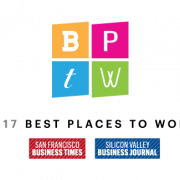Rothrock and Cybersecurity Experts to Discuss the Value of a Digital Resilience Strategy to Combat Cyber Attacks

WHAT: The 20th Annual Milken Institute Global Conference convenes more than 4,000 influential leaders from 50 countries, to tackle the world’s most stubborn challenges, including cybercrime. Recent breaches have ranged from corporate theft to hacks allegedly carried out to influence the outcome of elections. A recent study from Cybersecurity Ventures predicts the global cost of cybercrime will grow from $3 trillion in 2015 to $6 trillion by 2021.
In this panel, titled “My Organization Has Been Hacked! Now What?”, cybersecurity experts will explore the value of a digital resilience strategy, and how it plays an important role for companies before and after they encounter a cyber attack. The panelists will address how the private and public sectors can be more effective in combatting hackers across national borders, as well as what companies can do to minimize the damage when a breach does take place.
WHO: The panel will be moderated by Ray Rothrock, Chairman and CEO of RedSeal, who recently discussed the C-Suite’s trouble assessing cyber risk with Jim Cramer on CNBC’s Mad Money. A thought leader in cybersecurity, Rothrock participated in the White House CyberSecurity Summit held at Stanford University in February 2015.
Panelists:
- Heather Adkins, Director, Information Security and Policy at Google
- Dmitri Alperovitch, Co-Founder and CTO, CrowdStrike Inc.
- Daniel Ennis, CEO, DRE Consulting; Exec. Director, Global Cyber Security Initiative, Univ. of Maryland, Former NSA Director, Cyber Threat Operations Center
- Siobhan MacDermott, SVP Executive, Global Cyber Public Policy, Bank of America; Global Fellow, Geneva Center for Security Policy
WHEN: Monday, May 1, 2017, 10:45 AM-11:45 AM
WHERE: The Beverly Hilton, 9876 Wilshire Boulevard, Beverly Hills, CA 90210











